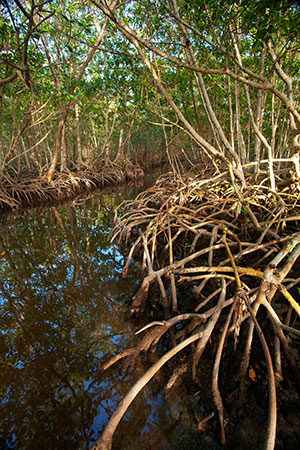The most recently completed study, undertaken by the Tampa Bay Regional Planning Council with funding from the Tampa Bay Estuary Program, shows that nearly one of every two jobs in the Tampa Bay watershed is influenced by the bay. Perhaps more importantly, almost 20% of those jobs – representing about 300,000 workers – are dependent upon a clean and healthy bay and contribute more than $20 billion to the region’s economy.
While the studies gauge benefits differently, the results make it clear that protecting Tampa Bay’s natural resources is critical to the region’s economic success, said Manny Pumariega, TBRPC executive director. “Until now, the economic value of the bay has generally been unquantified, but these studies show that without a clean, healthy bay and well-functioning natural resources, our region’s economy would not be what it is today.”

The TBRPC study, released in August, looks at employment, real estate, food services and lodging in the Greater Tampa Bay region, encompassing all or parts of six counties from Hernando to Sarasota. Overall, more than two million people work in the 6-county bay area, with 68% of those working directly in the bay’s watershed.
The dollar valuations detailed in the TBRPC study are limited to TB watershed, specifically excluding Pinellas County beaches which drain to the Gulf of Mexico. That makes the numbers even more impressive: homes directly on the bay generate roughly four times the property tax revenue of inland homes. Even homes within a quarter-mile of the bay generate double the tax revenues of those farther away.
Similar differences are found in lodging, where a 3-star hotel situated on the bay costs an average of 45% more per night.
Along with the short-term economic benefits of tourism, the study tried to determine the impact on other industries that could operate from anywhere, including technology, management and professional firms. Surveys completed by industry, economic development and environmental professionals show a significant dependence on a healthy bay across a wide range of industries including:
- 24,981 jobs, or 37% of the total 66,052 workers in real estate and leasing
- 34% of accommodation and food service workers for a total of 33,875 jobs
- 31% of the total 37,861 workers in the arts and entertainment
- 18,836, or 25% of the total 72,448 construction jobs in the region
And what might come as a surprise to some people but doesn’t shock economic development experts is the 27,152 jobs – or 24% of the total 113,132 – in professional, scientific and technical fields that are dependent upon a healthy bay. “People visit Tampa Bay for the bay, then they are more likely to move here for the quality of life,” said Avera Wynne, TBRPC planning director. “In many cases, they have the skills that make it possible for them to live wherever they want.”
Ecosystem values more difficult to define
The longest-running study, underway since 2008 by the U.S. Environmental Protection Agency’s National Health and Environmental Effects Research Laboratory, looks at “ecosystem services” or the benefits natural resources provide to human beings. Over the long term, the goal would be to show the impact of human activities on the economic benefits the bay provides. For instance, models could determine that filling in 20 acres of wetlands in the Hillsborough River would result in the loss of a specific number of sea trout with a clearly defined dollar value.
“We’re not there yet, but that’s the long-term goal,” says Marc Russell, the EPA scientist heading up the Tampa Bay study, one of four prototypes in the nation. “We want citizens and elected officials to understand the economic impact of human activities on the benefits that natural resources can provide.”
It’s easier said than done. A recently completed website determines current values for those services by land use, then estimates how they will change as the region continues to grow using the scenarios created in the One Bay Regional Vision.
“There’s still a lot of room for error – particularly when you add multiple benefits of a resource like mangroves and come up with a number that’s astronomically high,” Russell said. “The goal is to create a number that shows an elected official that there are ways to quantify the value of natural resources.”
A new website planned for completion later this year goes a step further and allows users to create summary reports on the anticipated impacts of ongoing development. “It takes any parcel with a Florida Land Use Classification and shows what happens both up and down the watershed if the density or land use is changed, identifies the beneficiaries of those services and then puts a dollar value on the benefits,” he said.
For instance, flood control services benefit landowners near a proposed development at a value of $2 per cubic foot of water stored. Mangroves and marshes that remove nutrients from stormwater are valued at $1 per pound of nitrogen removed, a benefit which the entire region receives. Tree canopies that remove carbon dioxide from the air are valued at $20 per ton with world-wide beneficiaries.
“These numbers are very conservative but they can easily be changed as necessary,” Russell notes.
The effort to quantify value is a new focus for the FDA, he adds. “We realize the regulatory side can only take us so far with sticks – we need carrots too. This has long-term ramifications by giving citizens the tools they need to access the value of an ecosystem. We hope it creates a new definition for ‘highest and best use.’ ”
[su_divider]